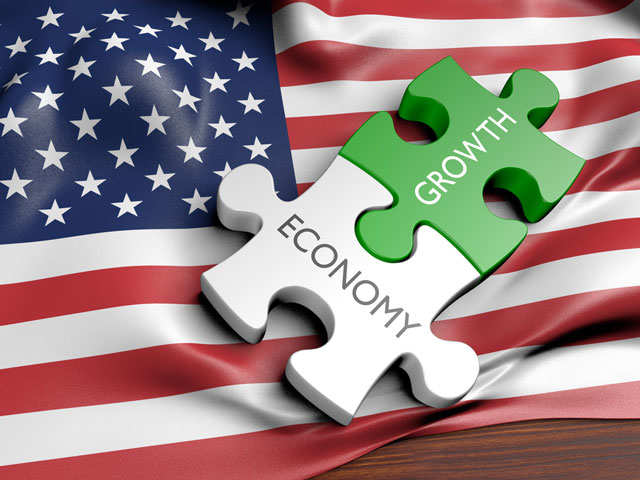INSUBCONTINENT EXCLUSIVE:
Robust US investment is fanning hopes that stronger growth in productivity — the missing piece in the country’s slow-footed economic
expansion — may finally be showing up
Such enthusiasm may be premature.
As Federal Reserve Chairman Jerome Powell outlined in a speech last week, while higher investment is
good, there’s a lot more that goes into boosting productivity, making its renaissance much less than a sure thing
He even repeated precisely what former Fed Chairman Alan Greenspan said more than a decade ago when he warned that productivity growth is
“notoriously difficult to predict.”
Productivity describes output per hour of work
If a firm purchases new machinery and pumps out more widgets with the same number of workers, it’s getting more productive.
Its importance
to rising living standards is hard to overstate, and its growth goes a long way to explaining the gang-buster US economy in the wake of
From 1948 through 1977, annualized GDP expansion, measured each quarter, averaged 3.9 per cent, driven by labor productivity growth that
averaged 2.6 per cent.
Economists also like to mention a measure that incorporates how efficiently companies use capital, known as
total-factor productivity
That averaged 1.9 per cent in the same period, according to the San Francisco Fed.
But except for a burst associated with the first Internet
boom in the 1990s, productivity growth since the late 1970s has been dismal, especially in the wake of the financial crisis
Labor productivity since 2011 — when the labor market stabilised after massive layoffs — has averaged 0.7 per cent annual growth, and
total-factor productivity just 0.6 per cent.
Some of that weakness was surely due to the deep recession and a pullback by firms on
So the recent news is good: The amount of money firms plowed back into their companies — on things like buildings, equipment and
intellectual property — jumped 6.3 per cent in 2017 after barely growing at all in 2015 and 2016
That’s the best since 2011.
Perhaps in response, labor productivity growth ticked up to 1.2 per cent in 2017, and TFP to 0.8 per cent
That has some in the Trump administration giddy.
“The capital spending boom is going to drive growth up this year, and then the output
from all that capital is going to drive up wages and productivity as we go forward,” Kevin Hassett, chairman of the president’s Council
of Economic Advisers, told Bloomberg Television in February.
Unfortunately, the relationship between positive swings in investment and
larger, lasting upturns in productivity isn’t nearly so neat.
“Periods of rapid productivity growth tend to be correlated with periods
of rapid capital accumulation,” says Martin Baily, a former CEA chairman under President Bill Clinton and now senior fellow at the
Brookings Institution in Washington
“But one can’t automatically interpret that as a leading indicator
I don’t think there are any good leading indicators.”
Powell, in his speech, noted that investment is only one of three broad inputs to
productivity growth, alongside labor quality and innovation
When those components are broken out, it’s clear that variance in investment can make a difference
But most of the gap between high-productivity periods and recent years is due to the lower contribution of innovation.
Some productivity
specialists like Erik Brynjolfsson, a professor at the MIT Sloan School in Cambridge, Massachusetts, are decidedly bullish about the
long-term prospects for productivity
He points to promising technological innovations now in the pipeline, from driverless vehicles and voice recognition to health-care
But how and when those translate into measurable economic growth, he says, is the real mystery of productivity.

